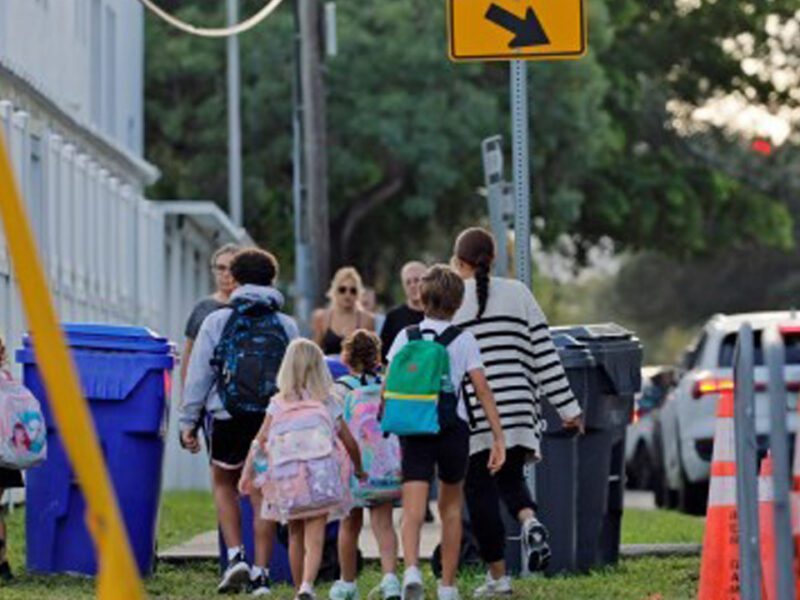
Biden Says Schools Are On Track To Open As Promised, But Will Kids Go?
WLRN | by Cory Turner | March 25, 2021
During his first news conference, President Biden said Thursday that his administration is on track to keep a promise he made to the nation’s parents and caregivers: to reopen the majority of elementary and middle schools for full-time, in-person learning within his first 100 days in office.
Newly released federal data suggest the president may indeed be on track — but that reopening the nation’s schools doesn’t mean all students will quickly return to classrooms. Here’s a look at the numbers from a nationally representative sample of roughly 7,000 schools:
- Roughly 42% of students (fourth- and eighth-graders) represented in this survey attended public schools that, as of last month, were offering full-time, in-person learning to all students. This is the number that Biden is highlighting when he says he’s close to keeping his promise.
- What’s more, 35% of public schools are also offering some sort of hybrid learning schedule to all students, where children may not be in classrooms full time but are still being offered some in-person learning.
With the Centers for Disease Control and Prevention revising its reopening guidance — reducing its student distancing recommendations from 6 feet down to 3 — it is possible that both numbers rise in the next month, helping Biden reach his goal.
The data, however, tell a few other stories that suggest the nation’s schools have a long way to go to emerge from the shadow of this pandemic.
While 42% of students attended schools that offered fully in-person learning, just 33% of students returned full time. The fact is, many families in communities hit hard by COVID-19 remain reluctant to send their children back to school, even if those schools have reopened.
“Not everybody is there yet,” said Shari Camhi, superintendent of a district on Long Island, N.Y., where about a third of her students are still fully remote. “There’s a lot of people that are still very wary about being in person. You know, there are those of us who have lost people we love.”
What’s more, the reopening has been inequitable. Students of color are much more likely to be learning remotely than white students — both because many families of color say they feel less comfortable sending their children back to school at this moment but also because, according to the data, city schools that serve large and diverse student groups are less likely to be open than largely white, rural districts.
As a result, nearly half of white fourth-graders were back in school full time — that’s compared with 15% of Asian, 28% of Black and 33% of Hispanic fourth-graders.
Camhi told NPR last week that she was proud to have reopened her classrooms safely — the most important first step in the nation’s K-12 recovery. The next step: for all families to feel safe sending their kids back into those classrooms.
Photo: Students returned to in-person learning on a hybrid model this week at St. Anthony Catholic High School in Long Beach, Calif. The country is on track to have a majority of schools open in the next two months, but not all children are going back.Patrick T. Fallon/AFP via Getty Images





